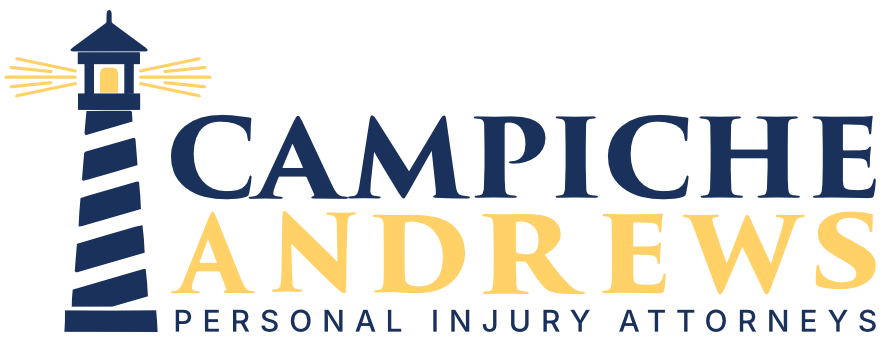Who Can File a Wrongful Death Claim in Washington?
Families coping with the death of a loved one face two immediate truths: (1) grief is overwhelming; and (2) legal and financial issues don’t wait. Washington law provides two complementary paths, survival action and wrongful death that serve different purposes and pay different people. Understanding how these claims fit together helps you avoid missed deadlines, protect evidence, and position your case for a fair settlement or verdict.
This guide breaks down the statutes, who files, who gets paid, which damages belong in each claim, how probate interacts with litigation, and what truly drives case value.
The short answer: survival action vs. wrongful death
Survival action (RCW 4.20.046, 4.20.060, etc.)
Preserves the decedent’s own claims as if they had lived: conscious pain and suffering, medical bills, lost earnings between injury and death, and certain property losses. Money flows to the estate, subject to probate, creditor claims, and then distribution per statute or will.
Wrongful death (RCW 4.20.010, 4.20.020)
Compensates the family/beneficiaries for losses caused by the death: loss of financial support, companionship, care, guidance, and funeral/burial costs. Money flows directly to statutory beneficiaries, usually outside the estate.
Most families need both claims. A single lawsuit typically pleads survival action and wrongful death counts together, then allocates damages appropriately.
At a glance: who files, who gets paid, and which damages apply
| Topic | Survival Action | Wrongful Death |
|---|---|---|
| Purpose | Preserve decedent’s own claims | Compensate family for losses due to death |
| Filed by | Personal Representative (PR) of the estate | PR of the estate (on behalf of beneficiaries) |
| Paid to | Estate (subject to creditors and distribution rules) | Statutory beneficiaries (spouse/partner, children/stepchildren; sometimes parents/siblings) |
| Damages | Pre-death pain & suffering, medical bills, lost wages between injury and death, property damage | Loss of support, companionship, care, guidance, funeral/burial, household services |
| Proof focus | Conscious pain, treatment course, interim earnings, records | Relationship evidence, dependency, future support, grief, impact on children |
| Tax notes | Compensatory portions generally not taxable; interest can be | Same; watch interest and any taxable allocations |
| Distribution | Through probate; may face liens/creditors | Direct to beneficiaries; court approval common with minors |
Want a primer on who can be a beneficiary or Personal Representative? Start here:
https://www.campichelaw.com/who-can-file-a-wrongful-death-claim-in-washington/
The statutes in plain English
RCW 4.20.010 & 4.20.020 (Wrongful Death)
Provide a cause of action when death is caused by another’s wrongful act, negligence, or default; define who benefits and how the recovery is distributed to beneficiaries.
RCW 4.20.046 & related (Survival)
Preserve causes of action accruing to the decedent during life. These claims become estate assets and are pursued by the PR.
These statutes complement each other: wrongful death addresses family losses, survival preserves decedent losses. Strong cases plead both and separate proof accordingly.
Who files the lawsuit?
In Washington, these claims are typically filed by the Personal Representative (PR) of the decedent’s estate. If no PR exists yet, the court can appoint one through probate. Sometimes, when conflicts exist, a litigation guardian or PR ad litem can be appointed to represent the estate’s and beneficiaries’ interests impartially.
Key logistics:
-
Open probate early so the PR has authority to request records, pursue claims, and sign releases.
-
Coordinate litigation strategy with probate steps, especially for minor children (who need special protections and court-approved allocations).
-
Expect court approval for settlements involving minors or complex allocations.
For a practical walkthrough of filing steps, see:
https://www.campichelaw.com/filing-a-wrongful-death-claim-in-wa/
Who gets paid, exactly?
Think of it this way:
-
Survival action money enters the estate. From there, valid liens/creditors may be addressed; then remaining funds are distributed via will or intestacy rules (unless statutes specify otherwise).
-
Wrongful death money bypasses the estate and goes straight to beneficiaries per RCW 4.20.020. The court often reviews a distribution plan, especially with multiple beneficiaries or minors.
Because the flows differ, your allocation strategy matters. A poorly structured settlement can trigger avoidable liens, increase taxes on interest components, or delay access for minors. A well-structured plan can respect everyone’s rights while minimizing friction.
Damages: what belongs where
Survival action damages (estate)
-
Pre-death pain and suffering: Requires evidence of conscious pain. Hospital charts, nursing notes, and family testimony help.
-
Medical bills prior to death: ICU, surgeries, medications, ambulance, etc.
-
Lost earnings & benefits between injury and death.
-
Property damage and other out-of-pocket expenses.
Wrongful death damages (beneficiaries)
-
Loss of financial support: Economists model expected contributions, adjusting for taxes, benefits, and worklife expectancy.
-
Loss of companionship, consortium, and guidance: Human loss proven through the story of the relationship—photos, calendars, texts, and witness testimony.
-
Household services: Childcare, transportation, eldercare, home maintenance—the unpaid work that must now be replaced.
-
Funeral and burial expenses.
For medical negligence death cases, see:
https://www.campichelaw.com/hospital-wrongful-death-lawsuit-washington/
and our medical negligence explainer:
https://www.campichelaw.com/what-counts-medical-negligence-washington/
Deadlines: limitations, discovery, and special notice rules
General rule of thumb: Many claims must be filed within three years of the wrongful act or omission or within one year of discovering the injury and cause—whichever is later. But your facts matter. For medical cases, layers of rules (including the statute of repose in some contexts) can apply. For government entities (e.g., public hospitals), Washington requires a pre-suit claim notice and a waiting period before filing.
Start your SOL homework here:
https://www.campichelaw.com/wa-medical-malpractice-statute-of-limitations-explained/
Why urgency matters: Evidence disappears quickly: video is overwritten, vehicles scrapped, EHR audit detail can be lost, witnesses move. Early counsel preserves what determines value.
Evidence that moves the needle
Liability proof
-
Video & scene data: Traffic cams, commercial security video, dashcams, 911 audio, witness cell phone video.
-
Vehicle/Trucking: ECM/ELD black-box data, driver qualification files, hours-of-service logs, maintenance/inspection records, bills of lading. Learn more:
https://www.campichelaw.com/who-is-liable-in-a-seattle-trucking-accident/
https://www.campichelaw.com/seattle-truck-accident-lawyer/ -
Premises: Incident reports, cleaning logs, prior complaints, security staffing plans, lighting and camera maps.
Medical & forensic
-
Complete medical record sets: Emergency, inpatient, specialist notes; imaging; lab trend graphs; EHR audit trails; medication administration records.
-
ME/autopsy findings and toxicology.
Human story & damages
-
Calendars, text messages, family videos, school/childcare records, caregiving logs—evidence that shows daily life before and after.
-
Econ evidence: Payroll, tax returns, benefits summaries, professional development plans.
-
Household services: Time diaries, replacement cost estimates.
For med-mal subtopics: misdiagnosis, delayed diagnosis, failure to treat—start here:
https://www.campichelaw.com/misdiagnosis-vs-delayed-diagnosis-malpractice/
https://www.campichelaw.com/medical-malpractice-when-trusted-care-turns-into-harm/
Government defendants and public hospitals
If your case involves a city, county, or state entity (including public hospitals), you must serve a claim notice and then wait a statutory period before filing suit. Miss the notice and you may lose your claim—even if you’re within the usual limitations period. Because public entities keep short video retention windows and strict incident reporting systems, immediate preservation letters are essential.
Comparative fault and causation
Washington follows comparative fault. If the defense shows the decedent was partly at fault, damages can be reduced proportionally. Anticipate and address:
-
Visibility & human factors (for roadway or premises cases)
-
Medical compliance (for health-care cases)
-
Alternate causation arguments (pre-existing illnesses, separate events)
Well-prepared cases use targeted experts—accident reconstruction, human factors, infectious disease, anesthesiology, obstetrics, emergency medicine, economics—to nail down causation and value.
Probate: the backbone of the litigation
Because the PR files the lawsuit, probate and litigation must stay in sync:
-
Appointing the PR: Choose someone organized and trusted; they owe fiduciary duties to all beneficiaries.
-
Court approvals: Settlements for minors require court review and protected accounts.
-
Liens: Medicare, Medicaid, and ERISA plan liens must be resolved; mistakes here can delays funds or cause payback disputes.
-
Allocation plans: Courts often want to see how the recovery is divided between survival (estate) and wrongful death (beneficiaries), and then among individual beneficiaries.
Taxes & structures
Compensatory damages for physical injury or death are generally not taxable as income. But:
-
Interest (pre- or post-judgment) can be taxable.
-
Certain allocations can create tax consequences.
-
Structured settlements can provide stable support for minors or dependents and can be tailored to life-care needs.
Always coordinate with a tax professional; your legal team should design the allocation with these realities in mind.
Valuation: how we build a number that holds up
There is no meaningful “average” settlement. Value is a model, refined through evidence:
-
Liability clarity & venue (including jury attitudes)
-
Causation (medical proof that the negligence led to death)
-
Economic damages (wages, benefits, household services)
-
Human loss (companionship, guidance, grief)
-
Coverage stack (primary, excess/umbrella, broker/shipper exposure in trucking)
-
Presentation (timelines, demonstratives, witness credibility)
We work with economists, vocational experts, life-care planners, and medical specialists to quantify loss in a way adjusters and juries respect.
Practical checklist: your first 10 moves
-
Appoint or prepare to appoint a Personal Representative (PR).
-
Preserve evidence immediately: video, vehicles, devices, EHR logs, employment files.
-
Obtain ME/autopsy records (if applicable).
-
Collect the complete medical record set, including EHR audit trails and EMS.
-
Identify witnesses (and contact info).
-
Gather financials: tax returns, pay stubs, benefits, budgets, and proof of household services.
-
Compile relationship evidence: calendars, journals, family photos/videos, messages.
-
For public defendants, serve pre-suit notices.
-
Map deadlines (limitations/discovery rules, notice periods, minors).
-
Speak with a trial-ready wrongful death lawyer who has the expert network to match your case.
FAQs: Survival action vs. wrongful death in Washington
Is a bad outcome always wrongful death?
No. You must prove a breach of the standard of care (or other negligence) and causation linking that breach to death.
Can I pursue both claims?
Yes, and most families should. Each claim captures different damages and pays different people.
Do we have to open probate?
Usually yes, so a PR can file and manage claims, handle liens, and sign releases.
How long does this take?
Many cases resolve in 9–24 months, depending on complexity, venue, and defense tactics.
What does it cost to hire a lawyer?
We work on contingency meaning no attorney fee unless we recover. We typically advance case costs (experts, records) and are reimbursed from the recovery per the fee agreement.
Why Families Choose Campiche Andrews
You don’t have to navigate this alone. We’ll protect deadlines, preserve evidence, and build the right strategy for your family.
Next step: Book a Free Case Review or call us through the Contact page. You can also review our broader guidance on Serious Injury and Wrongful Death.





